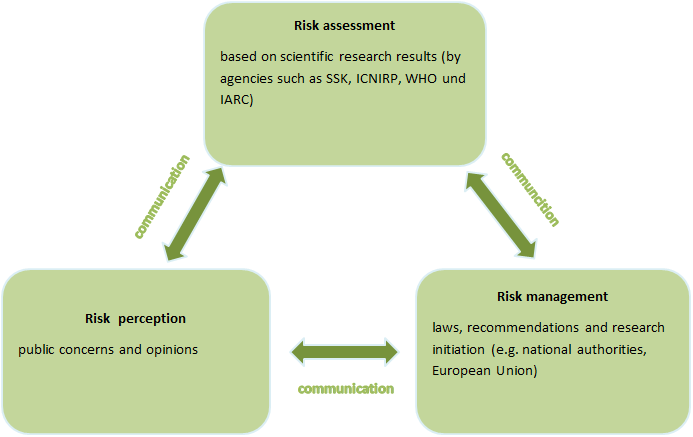Risk communication
The past decades have shown that electric, magnetic and electromagnetic fields, which we cannot see or feel, evoked intense controversies among the population about the possible health effects. For example controversies aroused regarding site selection for mobile phone base stations and newly planned power line locations during the power network expansion. Major problems in risk communication are mainly attributed to the different risk perception of scientists, politicians, industry representatives and citizens.
Risk and hazard
The terms risk and hazard are often not consistently used in everyday life and understood in different meanings according to WHO. However, it is important to make a correct distinction. A hazard is a potential source of danger (e.g. a substance or process) that may lead to an injury or illness to humans. Risk is the probability that a person will be harmed by a particular hazard to a variable extent (e.g. acute disease, chronic disease, or death). The following example illustrates this: alcohol is a hazard to health; the individual risk for alcoholic cirrhosis is determined by the amount of alcohol consumed. According to WHO, each activity is associated with a risk. Individual risk can be minimized but there is no zero risk.
Risk communication is the exchange of information on health and environmental risks between individuals, groups and institutions. Risk communication encompasses the areas of risk perception in the population, of risk assessment among scientists and expert panels, and of risk management by government authorities (see figure). Furthermore, associations such as environmental and consumer protection groups, media (e.g. newspaper, broadcast, television and internet), physicians and public health officers, lawyers in the jurisdiction, as well as the power supply and telecommunications industries are involved in the process of risk communication.
